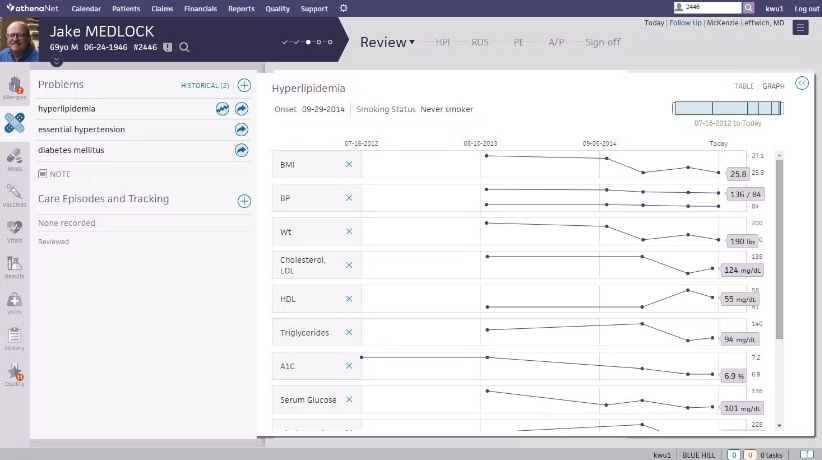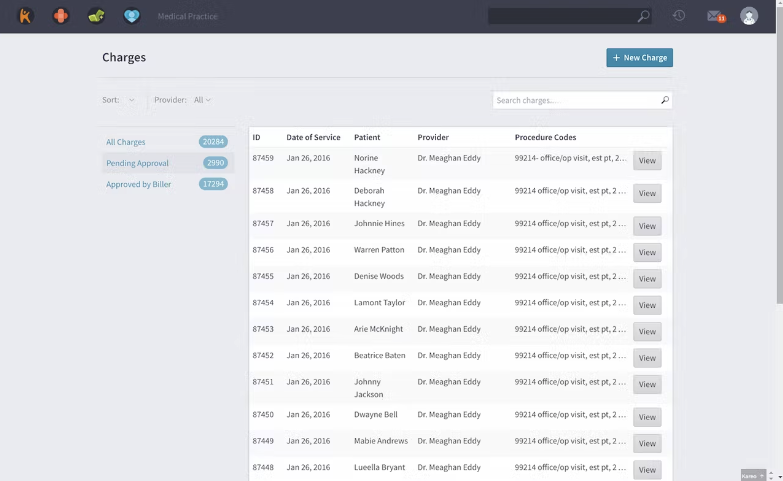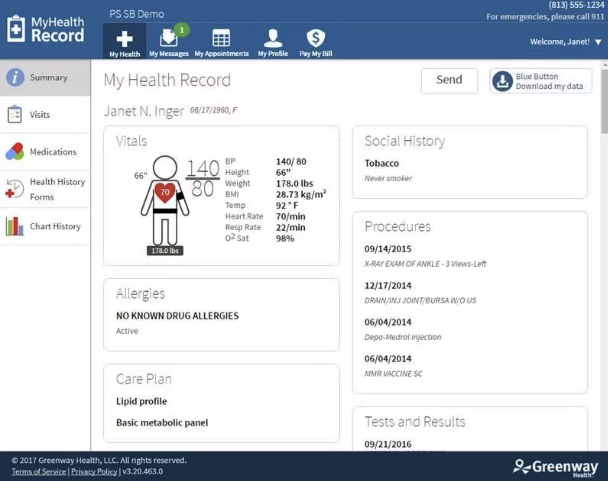A Concierge Medicine Guide: Definition, Salary, and Set-Up Info
According to Concierge Medicine Today, there are between 10,000 and 25,000 physicians or subscription-based programs across the U.S. and abroad that are ditching the status quo and adopting either concierge medicine, direct primary care, or some other type of subscription-based pricing model. [1]
For independent practices who have long-term relationships with their patients and are looking to downsize their patient load to focus on strengthening the physician-patient relationship, the pros of concierge medicine outweigh the cons.
If you are a small medical practice that’s on the fence about whether or not you should make the switch to concierge medicine, we’re here to break down every aspect of it so that you can make the most informed decision possible.
What is concierge medicine?
Concierge medicine, also referred to as direct primary care, is a type of practice management.
The easiest way to explain what concierge medicine is will be to talk about how it differs from traditional practice models. Here are some of the major differences:
Payment: Patients pay a flat membership retainer fee in advance for medical services. According to Tom Blue, executive director of the American Academy of Private Physicians (AAPP), this fee ranges from $50 a month to $25,000 a year, with $135 to $150 per month being the national average.
Insurance: Blue estimates about 75% of concierge physicians take insurance, while the remaining have cash-only practices.
Patient panel: Doctors usually have 80% to 90% fewer patients under the concierge model compared to more traditional practices. The average concierge practice will have 500 to 1,000 total patients, according to Blue.
Physician access: This decrease in patient population allows concierge physicians to guarantee same-day or next-day appointments, 24/7 access, and longer examination times.
Additional perks: Many concierge physicians offer incentives, such as house calls, nutritional counseling, emergency room visits, and executive-level annual exams.
An important note on insurance: Doctors must never charge a patient’s insurance company for services that are included in the patient’s concierge membership fee. Double billing (which means to charge for care submitted to the insurance company or Medicare in addition to charging the concierge fee) is considered healthcare fraud.
Concierge medicine doctors may choose to run their own practice or become affiliated with a physician network. Below are some key differences between these two care options:
Independent vs. network-affiliated concierge physicians
Independent concierge MD | Network-affiliated concierge MD |
|---|---|
Must handle all support services on their own | Support services (e.g., legal, marketing, and insurance) handled by network |
Can have as many patients as they can handle | Often limited to a certain number of patients |
Can charge patients whatever they want | Company decides how much to charge patients |
Don’t have to pay a fee to belong to a network | Must pay a fee to belong to network |
The average concierge medicine salary
According to Medscape’s 2022 Physician Compensation Report [2], the average salary for primary care physicians is $260,000. Physicians who use the concierge payment model can expect to earn about that much or slightly more depending on their patient retention and book size.
Concierge doctor salaries are apparently on par with their colleagues’ income. “I tell physicians this is not entirely a recipe to work a lot less and make a lot more. It is just a different, more satisfying, type of work,” says Blue.
Keep in mind that the amount of income you earn depends on how many concierge patients you serve. Some people opt to turn their entire practice into a concierge format. This is often referred to as the “full” model. It allows doctors to work at a slower pace because their revenue per patient is significantly higher.
Other doctors may prefer to implement a “hybrid” concierge model: The practice keeps operating in the traditional manner, but several hours a week are blocked off to care for a percentage of the practice’s concierge patients.
This is particularly attractive for doctors who fear their salary will take a hit if they convert to concierge overnight without securing enough membership fees to cover costs and make a living.
Although converting to a concierge practice may not result in a huge salary increase, it can lead to potential cost savings. Since you’ll presumably have fewer patients, you may be able to operate effectively with a decreased staff or a smaller office.
You very likely aren’t going to get rich switching to a concierge medicine practice model, but if you care about improving the health of your patient population, concierge medicine might be right for you. After all, you’ll be providing better patient experience while potentially decreasing your workload by reducing the number of patients you have to see each day.
Ask yourself whether or not you’re thinking about making the switch to concierge medicine because you want a salary boost or because you want to spend more time with your patients and deal with less overhead and paperwork from insurance companies.
Pros and cons of concierge medicine
If you’re trying to decide whether the pros outweigh the cons for your practice, it’s important to have a clear grasp on what they are and how to determine whether or not they apply to you. Do you want to build stronger relationships with your patients? Are you tired of dealing with red tape? Are you overwhelmed by the number of patient appointments each day?
We’ll help you focus on the important aspects so you can make the most informed decision possible.
Pros of concierge medicine
The three primary benefits you’ll see when making the switch to concierge medicine are as follows:
Concierge medicine gives you more time with your patients
Concierge medicine means less overhead for your practice
Concierge medicine lets you create a more personalized practice
Pro #1: Concierge medicine gives you more time with your patients
Here’s a shocking number: In 2021, doctors reported spending on average 15.6 hours per week on paperwork and other administrative tasks. [3] That’s on top of the time you spend with your patients. Considering the average time spent with each patient in a traditional primary care model is 13 to 20 minutes, it’s easy to see why the patient-physician relationship is sometimes left by the wayside.
Terry Bauer
CEO of Specialdocs
Under a more traditional primary care model, such as fee for service, doctors might see 30 to 50 patients a day, which means patients only get a few minutes with their doctor. A concierge medical practice might only see four to six patients a day, and those patients can often make same-day appointments.
This is a win-win for both you and your patient because they are given the attention and care they deserve, and you have more time to build those healthy relationships which can help prevent burnout.
Pro #2: Concierge medicine means less overhead for your practice
Without the need to worry about coding and billing, you can hire less staff which will increase your profits. Additionally, you don’t have to worry about dealing with insurance companies which might also eliminate another salary you have to pay.
In general, there’s less paperwork involved, and you won’t need to spend as much time updating your EHR. You have a more dependable revenue because you’re receiving consistent payments through membership fees. Additionally, you can spend your time focusing on medicine instead of paperwork which means you can practice medicine autonomously, according to your own personal vision.
Pro #3: Concierge medicine lets you run your practice with more autonomy
Without having to worry about billing, coding, and insurance, you are unfettered when it comes to the types of service you can provide your patients. You can tailor your practice specifically to the needs of your patients and community.
Bauer says “At a concierge medicine practice, the patient experience is completely different than at a traditional model because they provide same-day appointments which start on time, direct communication with the physician after hours, extended, unrushed visits with ample time for questions and follow up, a focus on preventive care and wellness, and peace of mind with a doctor who knows them well and is dedicated to advocating for them in our increasingly complex and impersonal healthcare system.” [4]
The traditional model of medicine can feel stifling for physicians who are not at all interested in the bureaucratic side of medicine. If that sounds like you, consider starting a concierge practice.
Cons of concierge medicine
The three cons you’ll primarily see when making the switch to concierge medicine are as follows:
You will lose patients when making the switch
Your patients will have higher expectations about the care they receive
It’s challenging to set the retainer fee correctly
Con #1: You will lose patients when making the switch
Switching to concierge medicine will inevitably cause you to lose patients since not all patients want to break away from traditional healthcare. Additionally, some patients might not make the cutoff for your new patient book.
Some simply might not be able to afford your new membership fee. Even more might not even want to switch to a subscription model. There’s simply no avoiding the fact that you will be losing patients when you make the switch.
You can minimize some of these pain points by surveying your current patients about their willingness to make such a switch or hiring a consulting partner who specializes in helping doctors start or join concierge medicine practices.
Con #2: Your patients will have higher expectations about the care they receive
Because patients are paying a subscription directly to your practice, they will have higher expectations for the level of care they receive. This isn’t a bad thing, but your patients will inevitably be more in tune with their health needs, which means they will be more hands on when it comes to their healthcare.
Concierge medicine comes with perks for your patients such as direct access to you for questions and concerns, sometimes 24 hours a day, which might mean you’re having to provide care at uncertain times. You can always specify specific boundaries, but you might lose patients to other practices who offer more comprehensive services.
Con #3: It’s challenging to set the retainer fee correctly
Finding the right balance between profitability and affordability for patients can be difficult. Setting a price that is enticing to patients while still making your practice enough money to profit and operate is difficult, and you might always feel like you didn’t set it correctly.
The best way to come up with a price is to do a financial and operational analysis, as well as a market evaluation. Check what other concierge practices are charging each month. Compare their patient panel size and community demographics to come up with a price point you feel is going to be that sweet spot for you and your patients. You can always hire an outside consultant or agency to help with these analyses.
Is the concierge medicine model right for you?
At this point, you may be wondering whether transitioning to concierge medicine is worth the effort. For many doctors, including concierge medicine advocate Dr. Steven Knope [5], the answer is a resounding yes.
Dr. Steven Knope
Author and internist
Like Knope, many practices are drawn to concierge because they believe the healthcare industry has become too bureaucratic. They are frustrated by the relentless financial squeeze on providers from the government and insurance companies due to reimbursement rate reductions and claims processing changes.
A switch to concierge medicine is a way to break through some of that red tape, allowing concierge doctors to spend more time on personalized patient care and less time worrying about when or how they’ll get paid for their efforts.
That said, this style of medicine may not be ideal for everyone. According to Dan Behroozi [6], executive vice president of business development and operations at MDVIP, the most sought-after types of physicians for the concierge medicine model include internists, family practice, endocrinology, and cardiology.
“The physician needs to function as a general practitioner. If they don’t have that primary care relationship, this is not the right model,” says Behroozi.
Bauer emphasizes the importance of having a plan: “Understand the factors that can influence your chances for success such as current status as an independent or employed practitioner, years practicing in your current location, patient panel size, and community demographics. Do your homework and arrange for financial and operational analyses and a market evaluation.”
Still having trouble picturing yourself in a concierge practice? Read our case study below to learn about one doctor’s experience.
Case Study
Birmingham Medical
L. Scott Grant, MD, a primary care doctor in Birmingham, MI, has a three-tiered concierge medicine model at his practice, with patients paying $500, $1,000 or $2,500 per year, depending on age and services.
His income thus far “has stayed about the same with a slight bump up, but I see fewer patients. I don’t have to work nearly as hard to make the same financial target,” he says.
His direct patient contact has shrunk from 60 hours per week to 30, while his after-hours time commitment to care, including phone calls and emails, has remained about the same, he reports.
“The pace of the day is different,” says Behroozi. “On average, our doctors see about 10 patients a day, give or take one or two. Our doctors don’t spend hours completing paperwork.”
Software to support concierge practices
If you plan to transition to concierge care, you’ll find that it’s a good time to re-evaluate workflows and invest in new or upgraded health IT tools. Below are some types of applications that can optimize concierge model operations and examples of highly-rated software vendors to consider.
Electronic health records (EHR)
Every physician benefits from digitizing their patient records, but concierge practices have unique incentives to go paperless.
EHRs make it easier to document a patient’s condition over time, so you can provide them with detailed and comprehensive clinical documentation that supports your recommendations for their health plan.

A screenshot of a patient’s long-term health statistics in athenaOne’s EHR (Source)
EHRs help practices offer a better quality of patient care. They include features such as integrated drug databases, symptom checks, and drug interaction verification which can help physicians prescribe the correct medications and dosages.
Additionally, doctors and administrators can access patient health information without rifling through scores of paper-based records. Other time-saving EMR advantages include the ability to receive lab test results digitally and prescribe medications electronically.
Since patients are essentially paying for more personalized services and will anticipate greater access to this documentation, it makes sense to invest in an electronic system to meet these expectations.
Medical billing software
Medical billing software is used by healthcare providers to automate their manual billing tasks, such as verifying patients’ insurance, processing and submitting claims, processing payments, and following up on denied claims. The software helps providers increase their collections by avoiding repetitive and cumbersome administrative tasks.
A concierge practice would not necessarily need the insurance aspects of this type of software, so that’s worth keeping in mind whenever you’re searching for software.

Kareo Billing Software’s overview of charges (Source)
Some solutions are particularly well-suited for concierge practices because they offer helpful functionalities, such as generating pre-collection letters, compiling a list of all payment plan patients, and running a report to calculate outstanding balances.
Patient portals
Patient portal software is a versatile solution that provides users with secure access to medical records and services. It boosts patient engagement by facilitating tasks such as scheduling appointments, requesting prescription refills, and making online bill payments.
Concierge practices might be interested in the ability to exchange messages with patients through the portal instead of over the phone. Most systems provide a secure electronic messaging platform that emails patients when their care team sends a new message. Providers can also respond to messages that patients send through the portal.

A screenshot of Prime Suite Software’s patient portal (Source)
The value of concierge medicine from the patient’s perspective is that they get to feel a greater level of accessibility to, and attention from, their doctor. Patient portals provide a platform on which doctors and patients can securely exchange messages, schedule appointments, and review medical notes any time of day.
Switching to concierge medicine could be right for you
Concierge medicine can be a great option for physicians who are ready for a change of pace thanks to the smaller patient panel and reduced dependence on insurance reimbursements.
If you’re frustrated with how bureaucratic the healthcare system has become, hate dealing with billing and insurance companies, and think building meaningful, lasting connections with your patients is the best part of the job, then you should seriously consider switching to concierge medicine.
Keep these things in mind as you make a final decision about the future of your practice:
There are many ways to offer concierge care. Consider the options (e.g., full versus hybrid models, independent versus network-affiliated), and choose what’s best for you.
Beware of double billing. You cannot bill insurance companies for services your membership fees already cover.
Don’t expect to get rich. Concierge medicine is more about improving your relationships with patients and limiting insurance hassles than it is about making more money.
Check out new software tools. For a smoother transition, consider EHR or practice management systems that meet and exceed concierge practice needs.
If you want information on other types of practice models to see if they’re the right fit for you, check out these other resources:
Sources
Industry Stats & FAQs, Updated for 2022, Concierge Medicine Today
Medscape Physician Compensation Report 2022: Incomes Gain, Pay Gaps Remain, Medscape
Medscape Physician Compensation Report 2021: The Recovery Begins, Medscape
Terry Bauer, LinkedIn
Dr. Steven Knope, LinkedIn
Dan Behroozi, LinkedIn